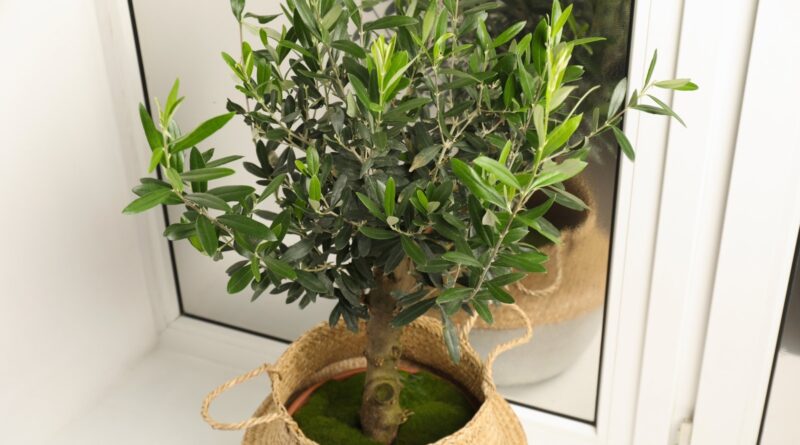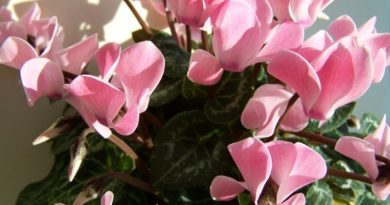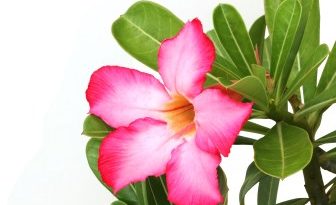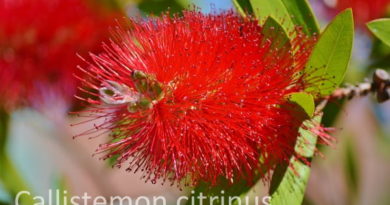How to Grow, Plant, and Care For Indoor Olive Trees
If you’re an avid interior designer or home DIY enthusiast, you’ve probably thought about filling an empty corner with a statement indoor olive tree.
This is one houseplant that’s usually purchased for the Mediterranean touch it brings to interiors. Olive trees aren’t the easiest to keep happy indoors, especially when it comes to lighting, but the beauty they add to homes is undeniable and, in my opinion, well worth the effort.
Plant Overview

|
|
|
What Is It?
There isn’t a specialized indoor olive tree that only grows inside. The trees you’ll see in baskets in minimalist homes online are either a version of the standard Olea europaea, or an ornamental dwarf variety in the case of shorter plants.
Dwarf or semi-dwarf varieties retain many ornamental characteristics of the olive tree you know but are more suited to living within the confines of a home. The foliage is the highlight, with slender silvery-green leaves that provide a year-round aesthetic appeal.
Unlike fruiting Olea europaea, dwarf olive trees are primarily ornamental. They are bred for their foliage and compact height and are typically unable to produce fruit (which doesn’t happen often indoors, anyway). Luckily, this downside doesn’t take away from their beauty. Use them to fill empty corners in your home and bring a touch of the Mediterranean to any climate.
History

Olea europaea, as we know, hails from the Mediterranean. Although we know it primarily as a source of food and oil, its history is far more intricate than that.
Cultivation dates back around 7,000 years in what is now modern-day Italy and Greece. But evidence of olive consumption dates back far longer – around 100,000 years. As the uses of this versatile plant grew, from lamp oil to use in beauty products, the plants gained symbolic significance, too.
In Ancient Greece, olives were a symbol of peace, victory, and of the city of Athens itself. As one of the larger Mediterranean exports at the time, it’s easy to see why it was so important. Think of the olive branch garlands adorning people in paintings or the olive oil used to light the famous Olympic flame, and you’ll have a sense of how beloved the olive tree was.
Cultivation spread quickly throughout the Mediterranean, entrenching itself in the region’s economy and cuisine. These trees now grow all over the world, although some argue none as prolifically as those in their native habitat.
Native Area

In case you haven’t already guessed it, Olea europaea is native to the Mediterranean. Here, the trees are accustomed to hot, dry summers, mild rainy winters, and gritty, well-draining soil.
This differs quite significantly from the tropical conditions that most houseplants are happy in. However, it does provide an option for houseplant lovers with dry indoor air that may struggle to grow other plants without a humidity boost.
This native area also hints at ideal watering times and soil requirements that can be used to recreate the conditions these plants love.
Characteristics

Indoor olive trees have the silvery narrow foliage and delicate look homeowners are after, especially in minimalist designs. Dwarf varieties are usually labeled shrubs rather than trees and stick low to the soil, as opposed to standard versions that can reach up to 30 feet in height.
Dwarf varieties generally do not produce any fruits and are grown for their foliage alone. If you do want to harvest olives from your tree, you’ll need a much larger plant, plenty of light, and the perfect care to get it right.
Fruiting indoors is rare due to the differing environments. If fruits are important to you, stick to growing outdoors and grow dwarf olives for their decorative value instead.
Where To Buy

These trees are generally easy to find. You want to look for trees labeled for indoor growth, as these have been bred in environments that mimic our home conditions. While it is possible to take a standard olive tree in a bag and transplant it indoors, you’ll likely have some trouble getting your tree to adapt to this kind of environment.
As always, start by checking your local nurseries, typically in the indoor plant section. Given their popularity, other home stores are also likely to stock indoor varieties in their houseplant section, depending on where you live.
If you don’t manage to find one near you, a quick search online should resolve the problem. This is also ideal for anyone looking for a specific cultivar, expanding your options from your region to the entire country. Make sure you order from a reputable seller if you purchase online. You don’t want to end up with a half-dead olive tree on arrival (or worse, no olive tree at all).
How to Grow
Since conditions in our homes don’t quite match up to their native habitats, these houseplants carry a label of being fussy or difficult to grow. However, if you find the ideal location, they can be remarkably low-maintenance plants once they’ve adapted to your space.
Light

One of the most important considerations in successful olive tree growth indoors is sunlight.
While most houseplants are accustomed to partial to full shade outdoors, olive trees are happiest basking in the sunlight. They need a position in front of a bright, south-facing window that gets several hours of direct sun per day to grow their best.
Unfortunately, these sunny positions can be hard to come by in many homes. You can also make an east or west-facing window work if there is enough direct light exposure, but growth will be slow, and you may notice a few problems (like diminished branches or leaf drop).
One way to counteract the lack of sunlight indoors is with grow lights. These mimic natural light outdoors to boost growth. But, since these trees are large, you’ll need a large grow light with plenty of coverage to make it work.
To stop your tree from stretching or becoming lopsided, rotate the pot slightly every couple of days so all sides receive the same amount of light exposure.
Water

Olive trees prefer dry and well-draining soil over consistently moist or soggy soil. Over summer in their native habitats, they grow in dry conditions with little rainfall. One of the worst things you could do to these drought-tolerant trees is overwater them.
To match their native environments, water your indoor trees only when the soil has almost dried out completely. You don’t want to leave it too long as you risk stressing the roots and causing leaf drop. However, it’s far better to wait a little too long than to water when the soil is still moist, greatly increasing your risk of root rot.
The exact time to water will depend on the conditions inside your home. For example, plants placed in front of a south-facing window will need water a little more frequently than those in front of an east-facing window with less direct light. Temperature and humidity also play a role in growth rate and evaporation, meaning there is no specific ‘perfect’ time to water.
Instead, test the soil frequently with your finger or lift up the pot to determine moisture levels. Once the soil has dried out significantly, you can water again. Water thoroughly until the excess seeps out the drainage holes, covering the soil evenly to prevent dry patches from forming.
Soil

Provide well-draining soil (and, with that, enough drainage in the pot) to prevent water from pooling around the roots. They grow best in sandy soil that retains some moisture but drains the excess away quickly.
I prefer to use a mix specifically designed for cacti or succulents, as they are formulated with materials to boost drainage. Drainage becomes even more important indoors as the soil doesn’t dry out as quickly as it does outdoors.
You can also create your own mix using a combination of high-quality potting soil, coarse sand, coconut coir, and perlite. Test the drainage by adding water to the mix before planting to make sure it drains well enough to satisfy your olive tree’s roots.
Temperature and Humidity

Warmth is essential for dwarf olive trees. They grow their best in moderate temperatures between 65F and 75F (18C and 24C). Consistency is also important. While they can tolerate minor fluctuations, sudden or extreme changes in temperature can lead to stress and leaf drop.
If you’re growing them for fruit, requirements differ slightly. They need the changes in temperatures between seasons to produce flowers and set fruit. Over winter, a slight dip in temperature is needed to trigger flowering, but extreme cold or frost can also damage the tree, preventing flowering. A delicate balance is needed – just one of the reasons why it’s so hard to get these trees to fruit indoors.
Olive trees also prefer dry air over high humidity. In fact, excessively high humidity can lead to issues with fungal disease, especially if there is limited airflow around the tree. It shouldn’t be too low, but humidity around 40% is ideal. Avoid keeping the trees in front of drafts as this can lead to leaf drop.
Fertilizing

Olive trees are not heavy feeders. However, as they use up the nutrients in the soil, they will benefit from a light application of fertilizer to prevent nutrient deficiency.
Use a balanced liquid fertilizer diluted to half strength during spring and summer. Once a month is generally enough to maintain nutrient levels in the soil. I use half-strength doses to avoid overfertilizing, especially in olive trees that don’t mind somewhat nutrient-poor soil.
Maintenance

Pruning can help you manage the shape of your tree and tackle any potential pests and diseases indoors. Trim any damaged or dead branches and cut back sections to create the overall shape you’re looking for. Avoid cutting back more than one-third of the tree to prevent stress.
Also, inspect the plant often (I usually check whenever I water) for signs of pests and diseases, particularly fungal diseases that can become a problem indoors. Treat any issues as soon as you spot them to prevent spread to your other plants – more on that later.
Propagation

Woody plants are not the easiest to propagate, especially when you’re dealing with slow-growing olive trees. However, it’s not impossible to propagate if you want to give it a try; it just requires a little extra patience.
The easiest way to propagate your olive tree is from cuttings. This is best done in late spring after some new branches have developed.
Choose a healthy, young branch and remove a section around eight inches long. The cutting should have a couple of leaves at the top section, with the bottom leaves stripped off.
Once trimmed, dip the cut end in rooting hormone. This is optional but incredibly helpful to stimulate root growth and prevent rot in woody cutting.
Plant your cutting in a well-draining soil mix. I use equal parts peat moss and coarse sand. Keep the soil consistently moist and place the cutting in a warm, bright spot out of direct sunlight. Cover the container with clear plastic to trap moisture and create a greenhouse environment to stimulate root growth.
Once you spot new growth on your cutting, you can transplant it into regular potting soil and a larger container.
Repotting

As olive trees are relatively slow growers indoors, they don’t require frequent repotting. However, it’s also a step you can’t skip altogether. Repotting is typically necessary every three years or so to refresh the soil mix or whenever your tree’s roots outgrow the current pot.
Choose a pot that’s slightly larger than the current one (no more than two sizes up). Slowly remove the tree from its old pot by turning it on its side. Then, prune any dead or damaged roots and replant into the well-draining soil mix mentioned above.
This process rejuvenates the soil, giving the tree fresh nutrients and space to continue growing healthily.
Common Problems
These aren’t the easiest plants to keep happy indoors. You’ll probably encounter a few of these problems, but they’re not the end of the world. As most relate to environmental conditions, changing positions to a spot that better matches their native environments can usually resolve the problem.
Discolored Leaves

Yellowing or browning leaves typically indicate watering issues, either over or underwatering. Overwatering is more common, but if the leaves are crispy and start dropping off the plant, you’re probably underwatering. Spotty discoloration is indicative of a pest or disease problem or possibly a nutrient deficiency, although that is rare.
Leaf Drop

This common problem is a stress response. It is often caused by a sudden change in environment, such as temperature fluctuations or a move to a new location. That’s why olive trees often drop their leaves when you bring them home for the first time. But don’t panic – in the right conditions, the leaves will grow back again.
No Olives

Indoor olive trees often don’t produce fruit due to variations in environment. If you’re growing a purely ornamental dwarf species, as is often done indoors, the tree also won’t produce fruit. Flowering and fruiting require specific conditions that are challenging to replicate indoors, so it’s better to enjoy them for their foliage alone.
Pests

Watch out for a few pests, with the most common being scale. These pests usually appear when the tree is stressed, producing brown bumps on the branches. Regularly inspect the leaves and branches for signs of a problem and control with neem oil.
Diseases

Look out for fungal diseases like rot, which is often caused by overwatering or poor drainage. Leaf spot can also affect the leaves in higher humidity conditions. Pruning and improving air circulation can help prevent these issues if you can’t lower the humidity.
Verticillium wilt originates in outdoor conditions where young trees are exposed to other infected trees. It’s a fungal disease that causes wilting branches. While rare in houseplants, if your tree becomes infected, it will likely die. The best road to preventing wilt is to provide proper care. Infected trees should be disposed of.
FAQs
Yes. They are manageable and quite low maintenance if their environmental needs are met. But if you don’t have the ideal spot, particularly when it comes to light, you may have trouble keeping them happy.
Incorrect watering (either too much or too little) is the most common issue, along with inadequate light. Getting these two basics right will eliminate a lot of the potential problems that can cause an early death in olive trees.
These plants grow slowly, usually only a few inches per year, depending on their care and environment. Keep them in direct sun and a larger container with fresh soil to boost growth.
Final Thoughts
There are a few things to remember to grow this popular houseplant successfully: water only when the soil dries out, provide ample sunlight, and keep it in warm temperatures between 65 to 75 degrees Fahrenheit (18 to 24 degrees Celsius). Soon, you’ll have a beautiful indoor olive tree for your houseplant collection!




